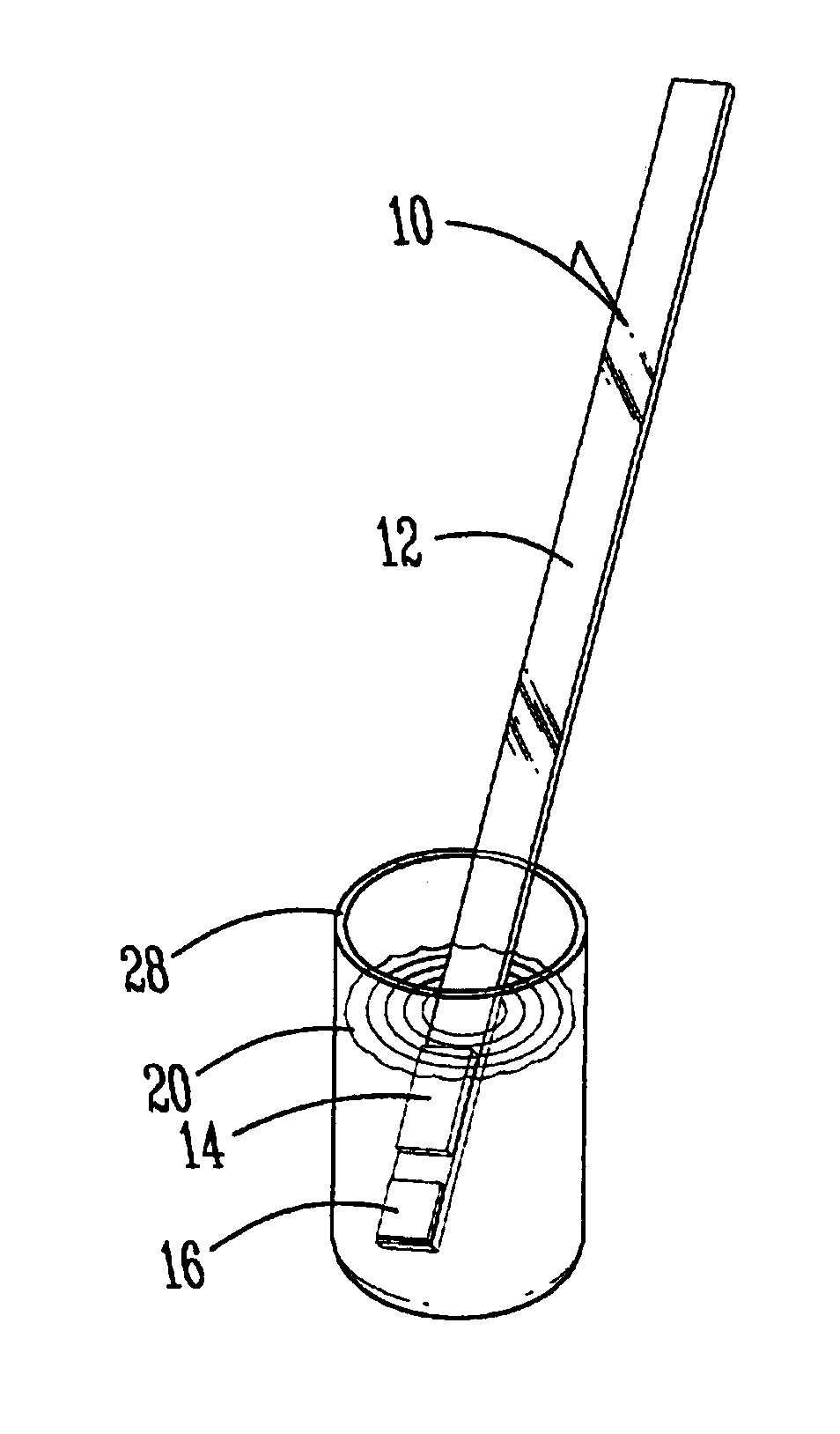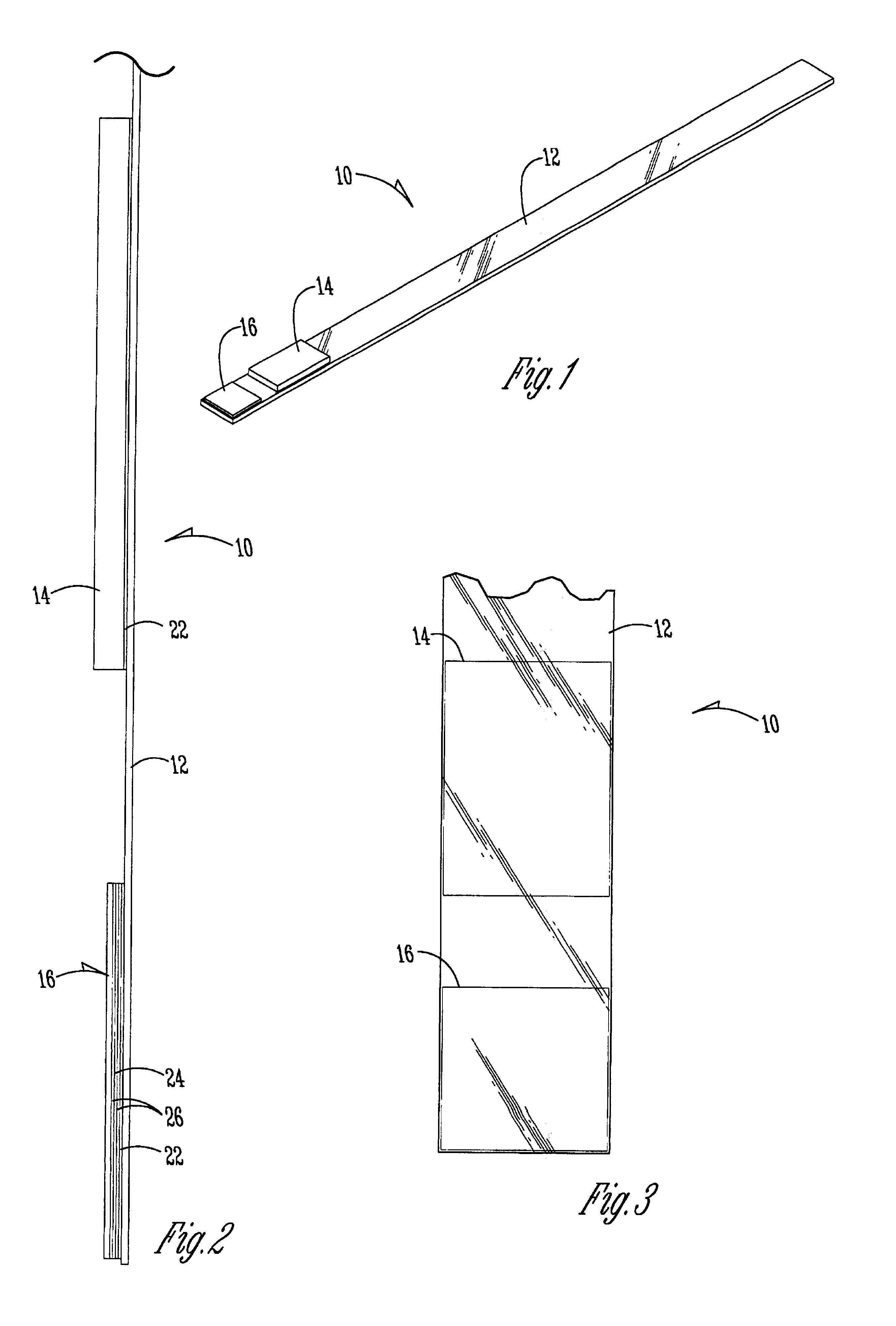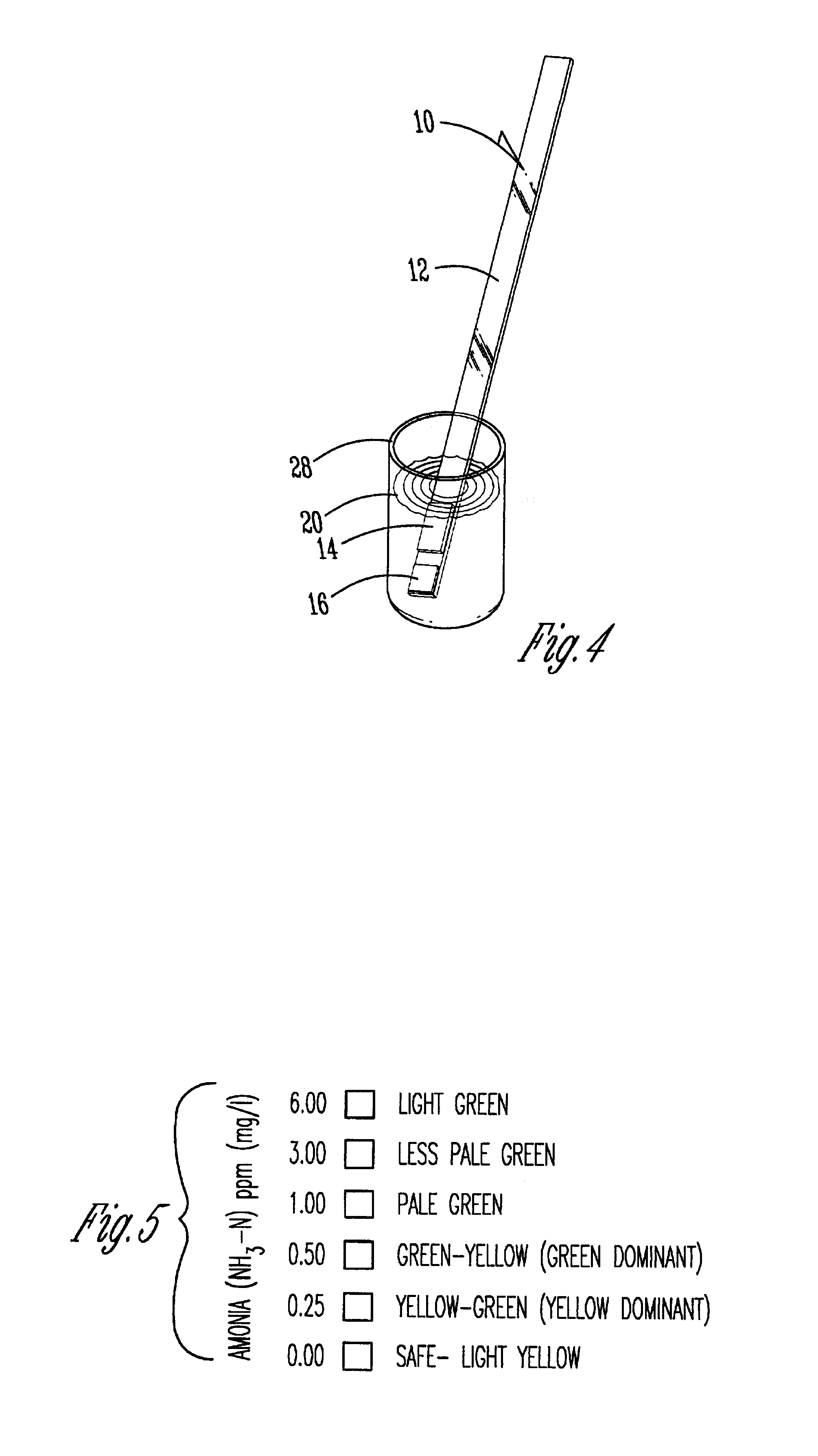Quick acting toxic ammonia test for aqueous samples
- Summary
- Abstract
- Description
- Claims
- Application Information
AI Technical Summary
Benefits of technology
Problems solved by technology
Method used
Image
Examples
examples
[0030]The following examples are offered to further illustrate but not limit the process of the present invention. In the examples test strips in accordance with the above description were prepared and then tested against known concentrations of ammonia in order to validate the testing.
[0031]The polystyrene material used for the handle was purchased from American National Can. Soda lime pad 14 was a 0.2 inch by 0.4 inch reagent pad having a weight percent of sodium hydroxide of 9.54%, and it was a weight percent of calcium carbonate at 0.12%.
[0032]The hydrophobic membrane of indicator pad 16 was a polypropylene membrane, naturally hydrophobic obtained from Cuno Filter Systems with a pore size of 0.6 microns. It was coated with a pH indicator dye / adhesive mixture with ethyl cellulose of reagent solution having the following concentrations:
[0033]
TABLE IDESCRIPTION1X MASTER(tert-octyl) phenol130gbromophenol blue (free acid)0.65gbromocresol green, Sodium Salt1.70gbromocresol purple (fre...
PUM
 Login to View More
Login to View More Abstract
Description
Claims
Application Information
 Login to View More
Login to View More - R&D
- Intellectual Property
- Life Sciences
- Materials
- Tech Scout
- Unparalleled Data Quality
- Higher Quality Content
- 60% Fewer Hallucinations
Browse by: Latest US Patents, China's latest patents, Technical Efficacy Thesaurus, Application Domain, Technology Topic, Popular Technical Reports.
© 2025 PatSnap. All rights reserved.Legal|Privacy policy|Modern Slavery Act Transparency Statement|Sitemap|About US| Contact US: help@patsnap.com



